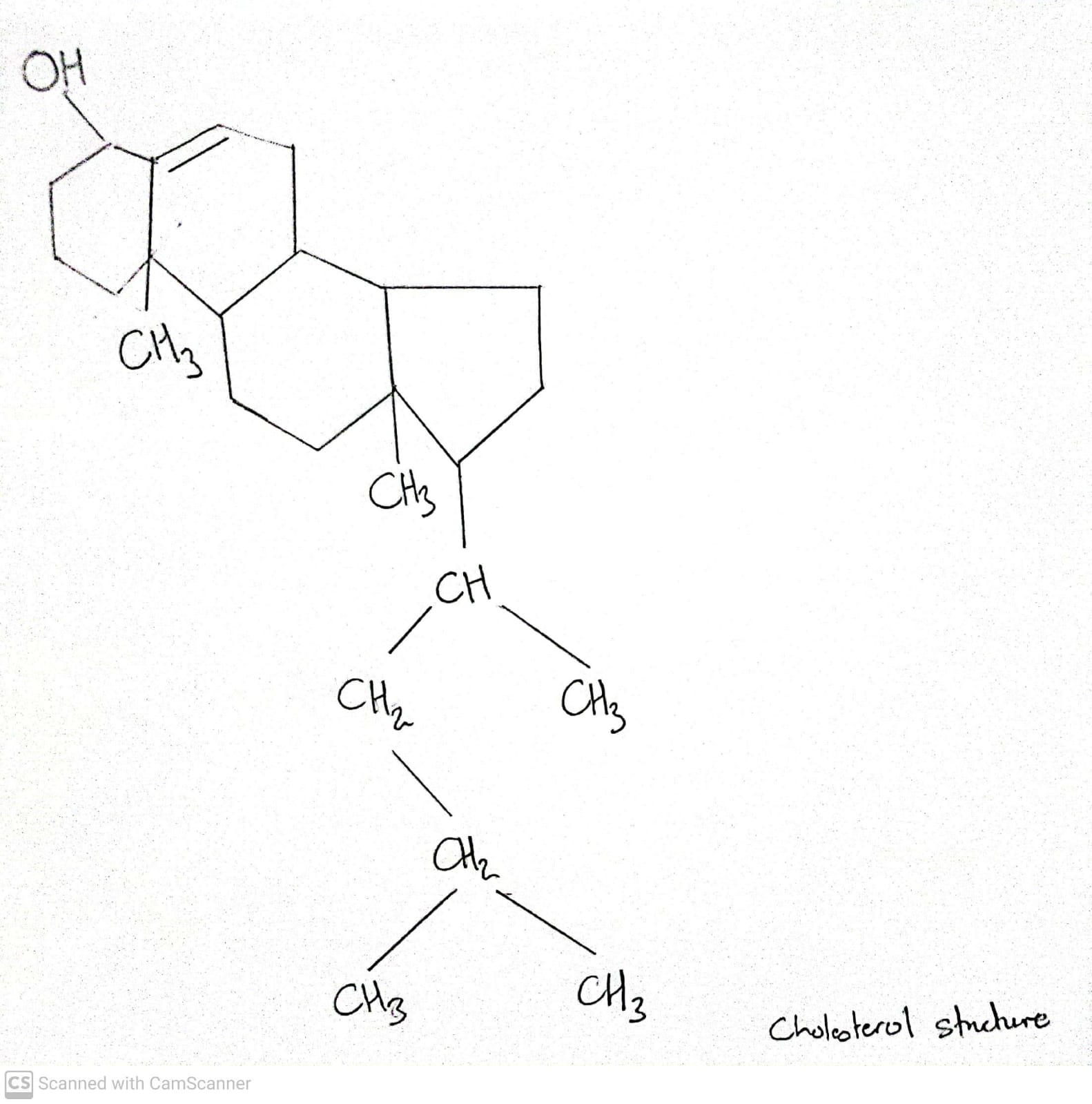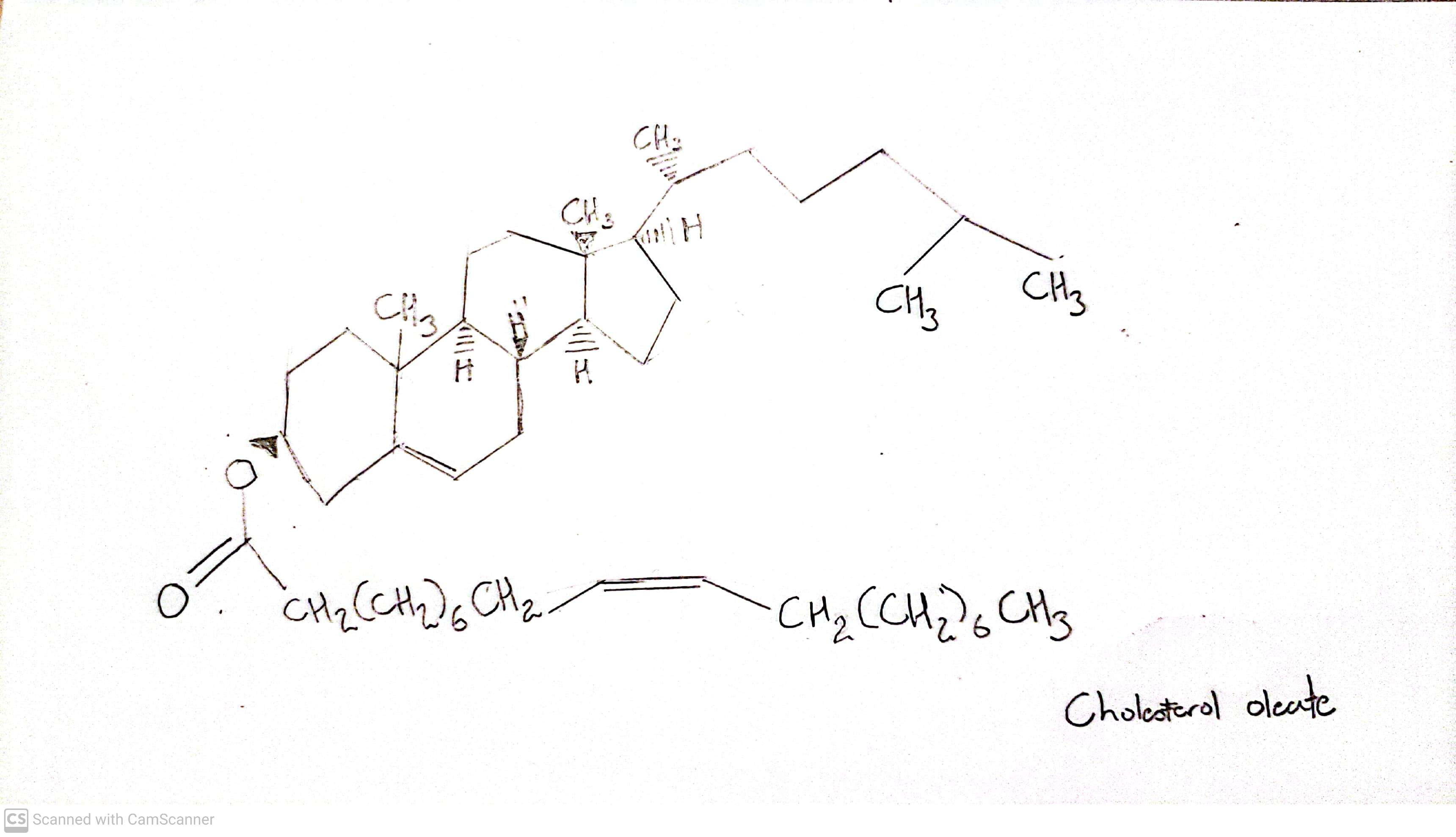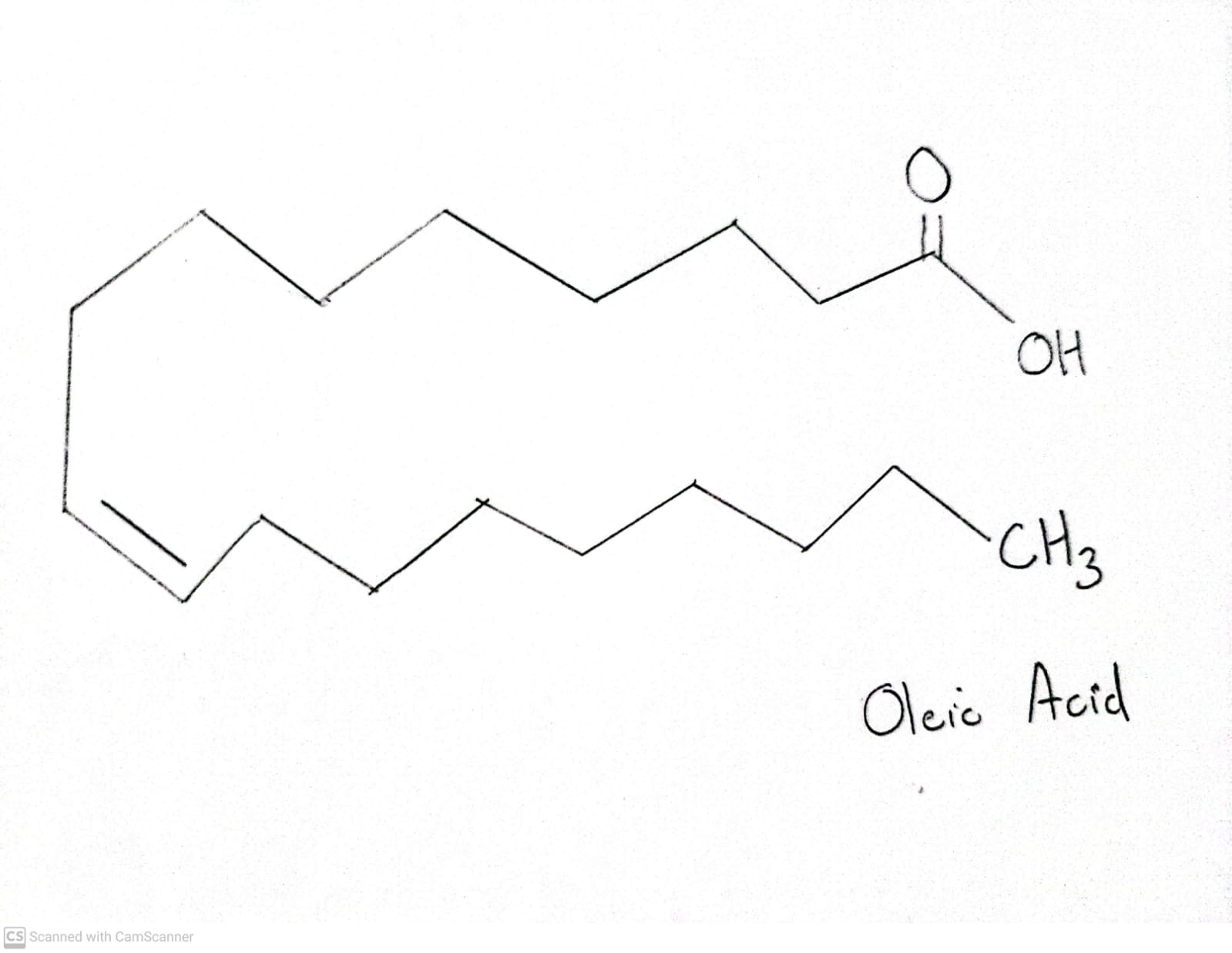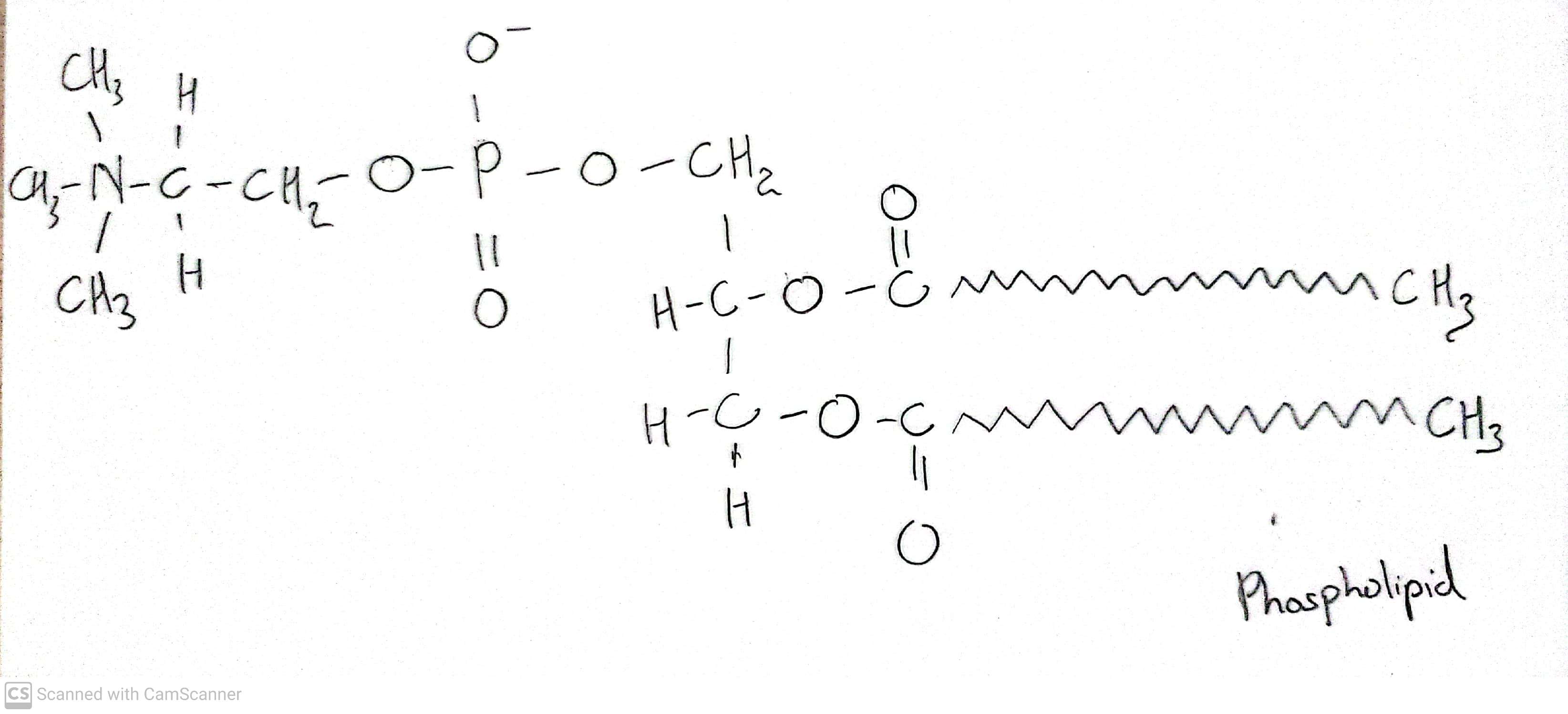Thin Layer Chromatography of Lipids Lab
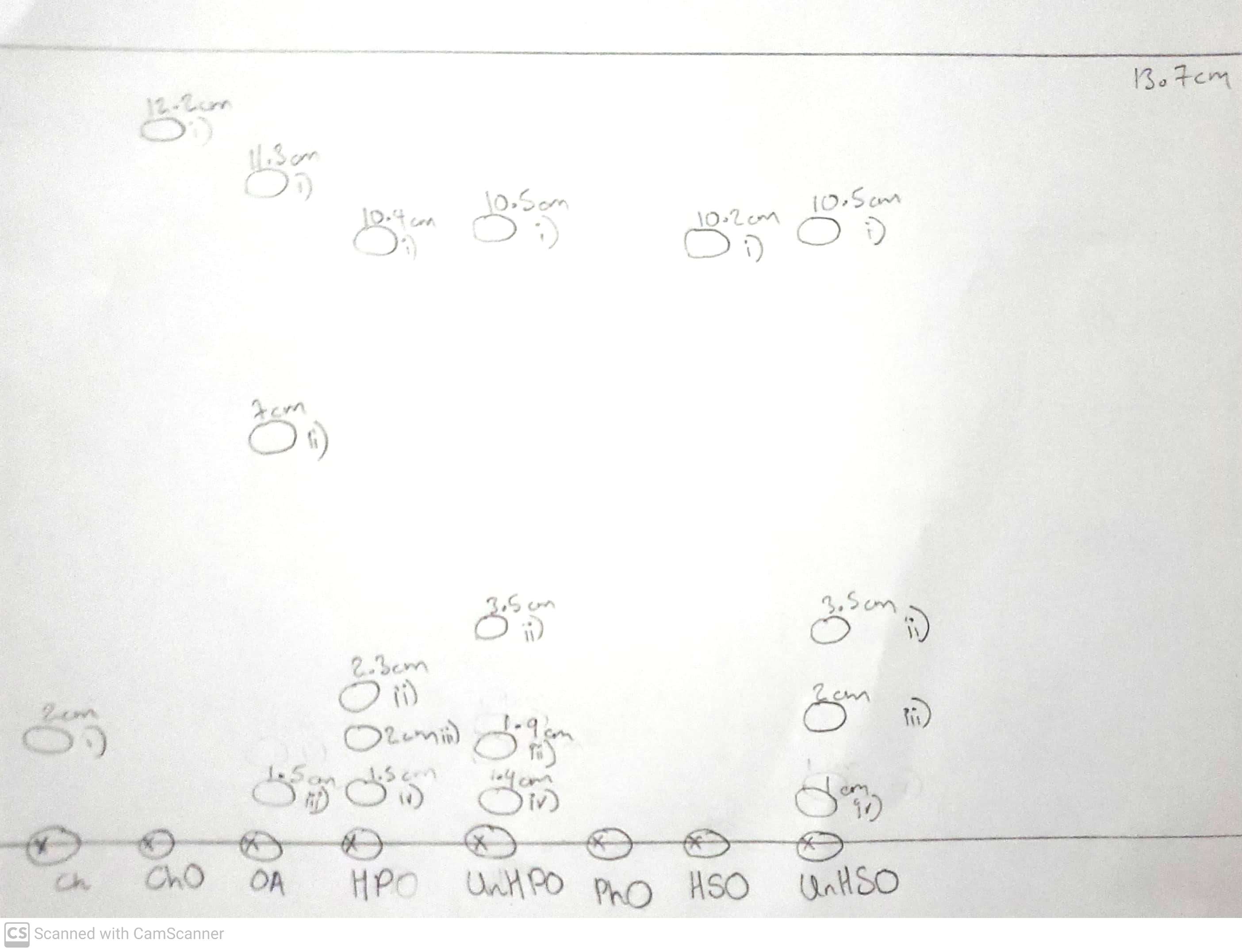
Rf value can be calculated by the distance travelled by component over the distance travelled by solvent.
Since the distance between each point was 1.5 cm and 2 cm, it's possible that the standards cholesterol and oleic acid were present in the heated peanut oil.
While there were no spots in unheated peanut oil that matched any of the standards, it did have spots iii) and iv) that were 1.9 cm and 4 cm, respectively, and were close to the standards' spots of 2 cm for cholesterol and 1.5 cm for oleic acid, indicating their existence in the lipid sample.
Experiment errors, such as not taking the measurement exactly on the ruler, might cause the values to differ from the normal values.
The heated soya oil might have included oleic acid, but this is a speculative guess because the closest spot in oleic acid is 11.3 cm from the baseline, which is 1.1 cm farther than the closest site in the lipid, which is 10.4 cm. However, because it contained a 2 cm spot that corresponded to the cholesterol standard spot, the unheated soya oil may have included cholesterol, but this is a speculative estimate because the oleic standard point is 1.5 cm away from the baseline while the real lipid spot was at 1 cm.
Heat, which disrupts the connections between some of the molecules in the lipids in the samples, causing them to fragment into smaller components, might be to blame for the lack of cholesterol in soya oil.
This results in the formation of two new molecules with opposite polarity to the original, resulting in more spots on the chromatogram for heated lipids than for unheated lipids, as well as heated lipids traversing a longer distance.
